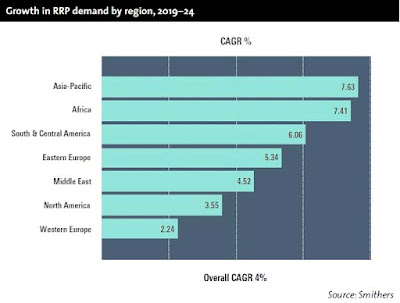1. Against excessive packaging
The primary purpose of the packaging is to protect the product from damage, to facilitate transportation, storage and customer carrying. On this basis, the packaging that's aesthetically pleasing will help boost the sale of the product. Proper packaging is undoubtedly necessary and beneficial. However, over-packaging that provides protection, convenience, communication, and decoration more than needed is bringing packaging to the other extreme.On one hand, over-packaging leads to waste of resources. Take cosmetic cardboard packaging as an example. The most common corrugated cardboard mainly includes 3-layer, 5-layer and 7-layer. In the developed countries, 3-layer cardboard accounts for 90%, while in China, 5-layer is common, which makes China spend over US$ 200 million extra a year to import paper pulp and cardboard, compared to using 3-layer cardboard. Simply put, using 3-layer corrugated cardboard would help China save 1/3 of the cost.

In addition, excessive packaging infringes on the interests of customers and also harms the interests of society. The trend of over-packaging foments luxurious and vain social atmosphere, which is not conducive to the construction of a conservation-oriented society.
2. Emphasis on material selection
Under the advocacy of green environmental protection, designers should strictly abide by the "5R+1D" principle and make deliberate trade-offs for packaging materials. Paper is mainly natural plant cellulose, which will quickly degrade in the natural world, resulting in low environmental pollution, so paper has become a widely used material in packaging.Retail food packaging is a major part in the packaging industry, accounting for about 70% . The problem of handling food packaging waste is a big problem. In the current era of consumption, people are more concerned about quality, sentiment and taste in food purchase. Designers may come to terms with this packaging trend, choose edible packaging materials as a way out of the conflict between packaging waste and environment. Actually, some kind of edible packaging film, which does not affect the original taste of the food, already exists for long. Such materials are both economical and non-polluting and are worthy of promotion.
3. Campaign moderate consumption
In the modern economics theory, consumption is the driving force behind the national economy and plays a key role in the development of the economy and the whole society. However, for individuals especially Chinese, frugality is a virtue. Savings in consumption of a single person makes it possible to have more financial and material resources for business activities, and get maximum earnings. Designers should keep in mind the economic virtues, which are consistent with the economic rationality of the market players. Advocate conservation and pay attention to the continuous improvement of consumption levels.The development of the economy and the improvement of people's living standards put greater pressure on the sustainability, and thus demand further advancement in packaging industries. Protecting the global environment and seeking harmony with nature requires ordinary consumers change their mind in terms of packaging consumption, too.



No comments:
Post a Comment